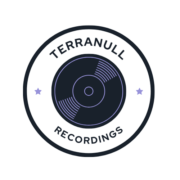As a DJ with over a decade of experience creating infectious playlists I’ve learned that crafting the perfect pop music mix is both an art and a science. It’s about more than just throwing together popular songs – it’s about understanding how to blend tempos moods and energy levels to keep people engaged.
I’ve discovered that the key to an unforgettable pop mix lies in selecting tracks that complement each other while maintaining a consistent flow. Whether you’re creating a playlist for a party workout session or just casual listening the right combination of current hits and timeless classics can transform any moment into something special. That’s why I’ll share my professional insights on how to create pop mixes that’ll have everyone asking for your playlist.
Key Takeaways
- A successful pop music mix combines essential elements like energy flow management, genre compatibility, harmonic mixing, and strategic song structure balance
- The optimal timing for high-energy segments is 15-20 minutes during peak hours (8-11 PM), while mid-tempo sections work best for 10-15 minutes during early evening
- Professional pop music production requires careful attention to beat selection (90-130 BPM), vocal processing techniques, and proper layering of frequencies
- Key mixing techniques include surgical EQ (cutting 200-300 Hz in vocals), strategic compression ratios (2:1 to 4:1), and effective use of reverb/delay effects
- Industry-standard tools like Pro Tools, Logic Pro X, and essential plugins (FabFilter, Waves, UAD) are crucial for achieving professional-quality pop mixes
Pop Music Mix
A great pop music mix combines five essential elements that transform random songs into a cohesive musical journey:
Energy Flow Management
- Match songs with similar BPM ranges (120-130 BPM for upbeat sections)
- Create dynamic transitions between high-energy hits & slower ballads
- Maintain consistent energy levels for 3-4 songs before changing tempo
Genre Compatibility
- Blend complementary subgenres (synth-pop pairs with electro-pop)
- Link songs through shared musical elements (bass lines vocal styles hooks)
- Mix contemporary hits with familiar classics in 70-30 ratio
Harmonic Mixing
- Align tracks in compatible musical keys
- Use the Camelot Wheel system for smooth key transitions
- Match songs with similar chord progressions
Song Structure Balance
- Alternate between vocal-heavy & instrumental sections
- Include 8-bar intro & outro segments for mixing points
- Position extended versions strategically for transition flexibility
- Front-load recognizable hits in the first 15 minutes
- Space high-energy peaks every 20-25 minutes
- Include 1 nostalgic track per 30-minute segment
Here’s a breakdown of optimal timing ratios:
| Mix Element | Recommended Duration | Peak Performance Time |
|---|---|---|
| High Energy Segments | 15-20 minutes | 8:00 PM – 11:00 PM |
| Mid-Tempo Sections | 10-15 minutes | 7:00 PM – 8:00 PM |
| Cool-Down Periods | 5-10 minutes | 11:00 PM – 12:00 AM |
| Build-Up Sequences | 3-5 songs | Every 30 minutes |
I’ve found that incorporating these elements creates a dynamic mix that keeps audiences engaged throughout extended sessions while maintaining professional-grade sound quality & flow.
Essential Elements of Pop Music Production
Pop music production requires meticulous attention to specific elements that create commercially successful tracks. My experience producing pop music has shown these components are crucial for achieving professional-grade sound.
Beat and Rhythm Selection
Pop beats feature precise drum programming with emphasized backbeats on counts 2 and 4. I incorporate layered kick patterns at 90-130 BPM, crisp snares, driving hi-hats plus supplementary percussion elements like claps, snaps or tambourines. Key rhythmic patterns include:
- Four-on-the-floor kicks for dance-oriented tracks
- Syncopated hi-hat patterns at 1/8th or 1/16th notes
- Strategic use of rhythm drops at 8 or 16-bar intervals
- Percussion loops that enhance the groove without cluttering
- Pitch correction using Melodyne or Auto-Tune at 5-15% retune speed
- Multi-band compression with 3-4 frequency bands
- Parallel compression at 4:1 ratio for consistent vocal presence
- Strategic automation of delay throws at 1/4 or 1/8 notes
- Layered harmonies panned 30-50% left and right
- De-essing at 4-8kHz to control sibilance
- Reverb with 1.2-2.0 second decay time on aux sends
| Vocal Processing Step | Typical Settings |
|---|---|
| Input Gain | -6 to -3 dB |
| Compression Threshold | -18 to -12 dB |
| EQ High Pass | 100-120 Hz |
| EQ Presence Boost | +2-3 dB at 5kHz |
| Reverb Mix | 15-25% wet |
Layering and Arrangement in Pop Mixes
Pop music mixes require strategic layering of elements to create depth and dimension. I’ve developed specific techniques for arranging tracks that maximize impact while maintaining clarity in the mix.
Building Dynamic Energy
I layer rhythmic elements progressively to build anticipation throughout each section. Starting with core elements like kicks and snares, I add complementary percussion patterns at key transition points. Here’s my approach to dynamic layering:
- Stack synth layers in 3-4 frequency bands (sub, mid, high)
- Introduce new elements every 4-8 bars
- Automate filter cutoffs on pads and atmospheres
- Add impact effects at arrangement markers
- Remove elements strategically before drops
- Pan supporting elements between 30-70% left/right
- Keep bass elements centered below 150Hz
- Use side-chain compression on pads and backgrounds
- Apply reverb sends based on arrangement density
- Create depth through parallel compression
- Utilize stereo widening on specific frequency bands
| Frequency Band | Stereo Width | Common Elements |
|---|---|---|
| 20-150 Hz | 0-10% | Kick, Bass |
| 150-2k Hz | 30-50% | Snares, Leads |
| 2k-8k Hz | 50-80% | Hi-hats, FX |
| 8k-20k Hz | 70-100% | Cymbals, Air |
Modern Pop Music Mixing Techniques
Pop music mixing combines technical precision with creative innovation to deliver radio-ready sound quality. My decade-spanning experience has shown that mastering specific techniques creates mixes that stand out in today’s competitive music landscape.
EQ and Compression Strategies
I utilize surgical EQ to carve distinct spaces for each element in pop mixes. Here’s my proven approach:
- Cut 200-300 Hz in vocal tracks to eliminate muddiness
- Boost 3-5 kHz for vocal presence without harshness
- High-pass instruments below 100 Hz except bass elements
- Notch competing frequencies between lead vocals synths at 2-4 kHz
For compression, I implement these settings:
| Element | Ratio | Attack (ms) | Release (ms) | Threshold |
|---|---|---|---|---|
| Vocals | 4:1 | 5-10 | 40-60 | -18dB |
| Bass | 3:1 | 10-20 | 80-100 | -12dB |
| Drums | 2:1 | 1-5 | 20-30 | -16dB |
Effects and Automation
I create depth through strategic effect placement:
- Layer 3 reverb types: short room (drums) medium hall (vocals) long plate (synths)
- Set delay times to 1/8 1/4 notes synced to track tempo
- Apply parallel compression on drum buses at 30% wet
- Create stereo width using mid-side processing on synth pads
- Automate reverb sends during chorus sections up 15%
- Increase high-pass filters during build-ups
- Fade delay feedback during transitions
- Modulate filter cutoffs on synths at 8-bar intervals
Professional Tools for Pop Music Mixing
I rely on several industry-standard Digital Audio Workstations (DAWs) for professional pop music mixing:
DAWs and Mixing Platforms
- Pro Tools Ultimate for comprehensive mixing control
- Logic Pro X for MIDI sequencing integration
- Ableton Live 11 Suite for real-time performance mixing
- Studio One Professional for drag-and-drop workflow
- FL Studio 20 for pattern-based production
Essential Plugins
- Dynamic Processing
- FabFilter Pro-C 2 for transparent compression
- Waves CLA-76 for punchy vocals
- Oxford Dynamics for multi-band control
- UAD 1176LN for classic limiting
- Equalizers
- FabFilter Pro-Q 3 for surgical EQ
- Waves SSL E-Channel for analog warmth
- UAD Neve 1073 for character EQ
- TDR Nova for dynamic equalization
- Time-Based Effects
- Valhalla VintageVerb for spatial depth
- Soundtoys EchoBoy for creative delays
- FabFilter Pro-R for natural reverb
- UAD EMT 140 for plate reverb emulation
Hardware Integration
| Equipment Type | Popular Models | Primary Use |
|---|---|---|
| Audio Interface | Apollo x8p | AD/DA Conversion |
| Control Surface | Avid S1 | Tactile Mix Control |
| Monitor Controller | Dangerous D-Box+ | Reference Switching |
| Outboard Compressor | API 2500 | Analog Bus Processing |
- Focal Solo6 Be for near-field reference
- Yamaha NS10M for mid-field translation
- Avantone MixCubes for mono compatibility
- Sonarworks Reference 4 for room correction
- Subpac S2 for bass monitoring
These tools combine modern digital precision with classic analog character for professional pop music mixing results.
Best Practices for a Radio-Ready Sound
Gain Staging and Headroom Management
Gain staging starts with setting peak levels at -6dB to ensure proper headroom. I maintain consistent volume levels across all tracks by adjusting clip gains before processing. Each channel measures between -18dB to -12dB RMS with transients peaking at -6dB, creating space for dynamics processing without distortion.
Stereo Field Optimization
Pop mixes require strategic stereo placement of elements to achieve radio-ready width. I position kick drums bass guitars mono center while panning rhythm guitars backing vocals between 30% 60%. Background elements like reverb effects extend to 90-100% stereo width creating an immersive soundscape.
Dynamic Range Control
Modern pop music demands controlled dynamics for broadcast compatibility. I apply multiband compression with:
- Attack times: 5-10ms for drums 15-20ms for vocals
- Release times: 50ms for transient control 150-200ms for sustain
- Ratio settings: 2:1 for subtle control 4:1 for aggressive limiting
- Threshold levels: -18dB to -12dB depending on source material
Frequency Balance Chart
| Frequency Range | Treatment | Target Level |
|---|---|---|
| 20-60 Hz | High-pass filter | -24dB/oct |
| 60-200 Hz | Bass presence | -6dB peak |
| 200-800 Hz | Low-mid control | -3dB scoop |
| 800-5kHz | Vocal presence | +2dB shelf |
| 5k-20kHz | Air brightness | +1dB shelf |
Final Output Processing
Radio-ready mixes require specific output processing techniques. I implement:
- Mastering limiter ceiling at -0.3dB for streaming platforms
- Soft clipper threshold at -6dB for added density
- Mid-side processing with +1.5dB boost above 8kHz
- Multiband stereo imaging between 150Hz-8kHz
- Sample peak limiting with 2ms lookahead
- ISRC codes for track identification
- Broadcast WAV format with timestamp data
- Peak normalization reference points
- Sample rate conversion markers
- Genre-specific mastering notes
Achieving Radio-Ready Results
Creating exceptional pop music mixes requires both technical expertise and artistic intuition. Through my years of experience I’ve learned that mastering the essentials of energy flow management harmonic mixing and dynamic arrangement are crucial for crafting engaging mixes that resonate with audiences.
I’ve shared my professional insights on everything from DAW selection to final output processing because I believe these elements are vital for achieving radio-ready results. Whether you’re a DJ crafting live sets or a producer working in the studio the principles I’ve outlined will help you create polished professional-grade pop music mixes.
Remember that great pop music mixing is an ongoing journey of learning and refinement. I encourage you to experiment with these techniques and develop your unique style while maintaining the high standards that modern pop music demands.



